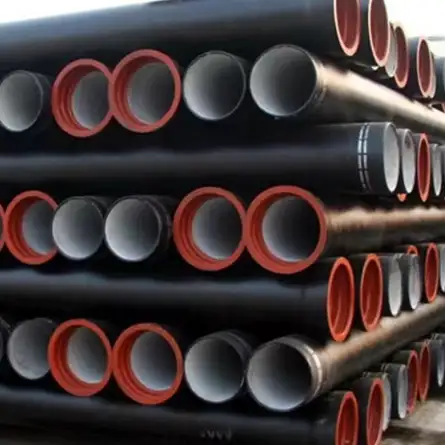Ductile iron, also known as nodular cast iron or spheroidal graphite iron, is a versatile material widely used in various industries due to its excellent mechanical properties and castability. The designation “65-45-12” refers to a specific grade of ductile iron, where the numbers represent the minimum tensile strength (in ksi), yield strength (in ksi), and elongation (in percentage), respectively. Understanding the hardness and other mechanical properties of 65-45-12 ductile iron is crucial for selecting the appropriate material for specific applications.

1. Mechanical Properties of 65-45-12 Ductile Iron
The mechanical properties of 65-45-12 ductile iron are defined by its tensile strength, yield strength, and elongation:
-
Tensile Strength: 65 ksi (448 MPa)
-
Yield Strength: 45 ksi (310 MPa)
-
Elongation: 12%
These properties indicate that 65-45-12 ductile iron offers a balance between strength and ductility, making it suitable for applications requiring moderate strength and good formability.
2. Hardness Characteristics
The hardness of 65-45-12 ductile iron is influenced by its microstructure, which consists primarily of ferrite with small amounts of pearlite. This composition contributes to its machinability and surface finish. The material can be oil quenched from 1600°F (885°C) to achieve a minimum Rockwell C hardness of 50 on the surface, with the core exhibiting lower hardness values. This heat treatment enhances surface wear resistance while maintaining core toughness.
3. Chemical Composition
The chemical composition of 65-45-12 ductile iron typically includes:
-
Carbon (C): 3.6–3.9%
-
Manganese (Mn): 0.1–0.4%
-
Silicon (Si): 2.3–2.9%
-
Phosphorus (P): ≤0.08%
-
Sulfur (S): 0.025%
-
Magnesium (Mg): 0.035–0.055%
-
Copper (Cu): 0.05%
-
Chromium (Cr): 0.03–0.07%
These elements contribute to the formation of spheroidal graphite nodules, which enhance the material’s ductility and strength.
4. Heat Treatment and Microstructure
65-45-12 ductile iron responds well to heat treatment processes such as oil quenching, flame hardening, and induction hardening. These treatments can increase surface hardness and wear resistance. The microstructure consists of Types I and II nodular graphite in a matrix of ferrite with approximately 5–25% pearlite. The ferritic matrix provides good machinability and impact strength.
5. Applications
Due to its balanced mechanical properties, 65-45-12 ductile iron is used in various applications, including:
-
Automotive components (e.g., gears, crankshafts)
-
Industrial machinery parts
-
Pumps and compressors
-
Valves and manifolds
-
Wind energy components
-
Construction equipment
Its combination of strength, ductility, and machinability makes it suitable for components subjected to moderate mechanical stresses.
6. Comparison with Other Ductile Iron Grades
| Grade | Tensile Strength (ksi) | Yield Strength (ksi) | Elongation (%) | Hardness (HB) | Microstructure |
|---|---|---|---|---|---|
| 65-45-12 | 65 | 45 | 12 | ~170 | Ferrite with pearlite |
| 60-40-18 | 60 | 40 | 18 | ~160 | Ferrite with pearlite |
| 80-55-06 | 80 | 55 | 6 | ~200 | Pearlite with ferrite |
This comparison highlights the differences in mechanical properties and microstructure among various ductile iron grades. 65-45-12 offers a balance between strength and ductility, making it suitable for a wide range of applications.
7. Frequently Asked Questions (FAQs)
Q1: What is the significance of the numbers in the 65-45-12 designation?
The numbers represent the minimum tensile strength (in ksi), yield strength (in ksi), and elongation (in percentage) of the material. For 65-45-12, this means a minimum tensile strength of 65 ksi, yield strength of 45 ksi, and elongation of 12%.
Q2: How does the hardness of 65-45-12 ductile iron compare to other materials?
The surface hardness of 65-45-12 can be increased to Rockwell C 50 through heat treatment, providing good wear resistance. This is comparable to low alloy steels, offering a balance between hardness and toughness.
Q3: Can 65-45-12 ductile iron be used for high-stress applications?
While 65-45-12 is suitable for many applications, for extremely high-stress environments, higher-strength grades like 80-55-06 may be more appropriate due to their superior tensile and yield strengths.
Q4: What are the advantages of using 65-45-12 ductile iron over other materials?
65-45-12 offers a combination of strength, ductility, and machinability at a lower cost compared to materials like steel. Its excellent castability and wear resistance make it ideal for various engineering applications.
Q5: How does the microstructure of 65-45-12 ductile iron affect its properties?
The microstructure consists of ferrite with small amounts of pearlite and nodular graphite, providing good machinability, impact strength, and fatigue resistance. This structure contributes to the material’s overall performance.
Q6: What are the typical applications of 65-45-12 ductile iron?
65-45-12 is used in automotive components, industrial machinery, pumps, compressors, valves, and wind energy parts. Its balanced properties make it suitable for components subjected to moderate mechanical stresses.
Conclusion
65-45-12 ductile iron is a versatile material offering a balance between strength and ductility. Its hardness characteristics, influenced by its microstructure and heat treatment processes, make it suitable for a wide range of industrial applications. Understanding its properties and applications can aid in selecting the appropriate material for specific engineering needs.
